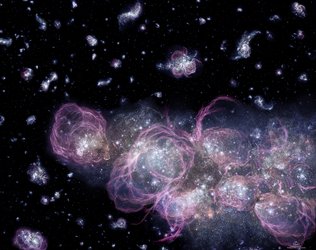What is gravity?
We understand that gravity is a purely attractive force – it can only pull, never push – and that it is generated by any object with mass.
But humankind has been trying to answer this question for thousands of years. Italian Galileo Galilei was one of the first scientists to investigate the way objects are caused to move.
However, it was not until Isaac Newton studied ‘gravity’ that we began to understand this feature of the Universe.

In 1687, Newton published his Universal Law of Gravitation. It provided mathematical expressions that would precisely describe the way objects moved in a gravitational field.
Not only did the expressions work for objects falling to the ground on Earth, they also explained how the planets moved through the night sky.
Unsurprisingly, this is heralded as one of the greatest works of science. There was only one observation his work could not explain: Mercury’s elliptical orbit gradually moves around the Sun, a phenomenon known as ‘precession’.

In the early 20th century, Albert Einstein developed his theory of general relativity in which he described gravity as a deformation in space, caused by the presence of massive objects, similar to the way a heavy ball would warp a sheet of rubber.
This deformation ‘tells’ smaller things how to move through space, so they either go into orbit or fell onto the larger celestial object.
This was a very different way to visualise space. In the past, it had been thought space was filled with a fluid known as ether. When no one could prove the existence of the ether, people began to think of space as simply empty. So, Einstein’s idea that space was like a fabric stretched across the Universe was revolutionary. He called it the ‘spacetime continuum’.
General relativity not only explained the precession of Mercury, it made a number of surprising predictions that, over the subsequent decades, have been observed to be true.
Among them was that light passing by a massive object would be deflected from its original path and that light escaping from a gravitational field would lose energy.
(In fact, satellite-based navigation systems such as GPS have to take this second effect into account, in order to pinpoint the location of their users precisely.)

The latest prediction of general relativity to be tested is that certain celestial objects will emit gravitational waves, which ripple through the fabric of space. Gravitational waves were directly detected for the first time by the advanced Laser Interferometer Gravitational-Wave Observatory in 2015, and the discovery was announced on 11 February 2016. Future space-based gravitational-wave observatories might attempt to detect them from space, and ESA’s LISA Pathfinder mission will test the fundamental technology and instrumentation needed for such an observatory.
Now, however, the clues are mounting that general relativity itself is incomplete. Certain observations suggest that there is more gravity in our Universe than can be explained by general relativity. For example, the Pioneer anomaly:
the Pioneer 10 and 11, Galileo and Ulysses spacecraft are slowing for an as-yet unknown reason.
Certain galaxies spin as if they were generating more gravity than appears possible. One explanation may be that vast quantities of exotic ‘dark matter’ exist in the Universe, or it may be that general relativity is not the final theory of gravity.
Only by testing the predictions of general relativity, to the limits possible in space, will scientists be able to gain clues about what the next breakthrough in our understanding of gravity might be.















 Germany
Germany
 Austria
Austria
 Belgium
Belgium
 Denmark
Denmark
 Spain
Spain
 Estonia
Estonia
 Finland
Finland
 France
France
 Greece
Greece
 Hungary
Hungary
 Ireland
Ireland
 Italy
Italy
 Luxembourg
Luxembourg
 Norway
Norway
 The Netherlands
The Netherlands
 Poland
Poland
 Portugal
Portugal
 Czechia
Czechia
 Romania
Romania
 United Kingdom
United Kingdom
 Slovenia
Slovenia
 Sweden
Sweden
 Switzerland
Switzerland






























